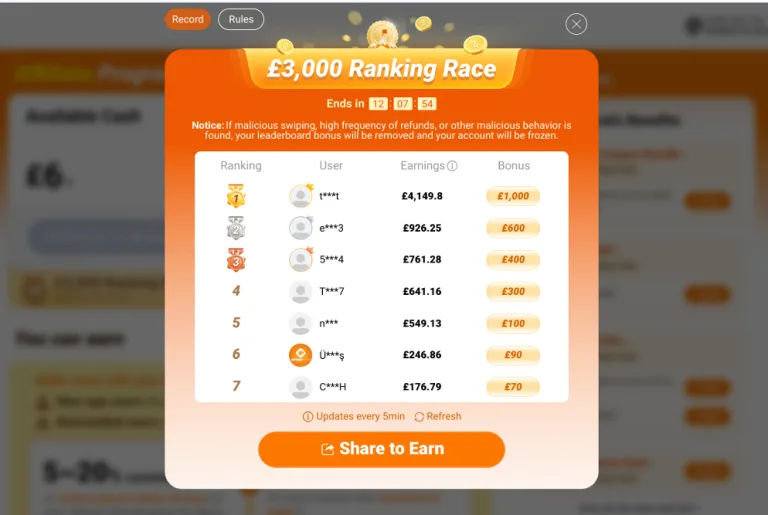How to boost your income with side hustles
Money Talk is intended to inform and educate; it's not financial advice. Affiliate links, including from Amazon, are used to help fund the site. If you make a purchase via a link marked with an *, Money Talk might receive a commission at no cost to you. Find out more here.
According to data from comparison site Finder, 43% of Brits have a side hustle – essentially any income stream that isn’t considered your main job.
I have a couple, including blogging and selling photographs on stock websites like Shutterstock*.
I actually consider these my passive income, because once I set them up, I do almost zero maintenance.
The last time I wrote something on my food blog was in 2016, for example.
And I haven’t submitted any new photographs for more than a year – mainly because I simply don’t have the time.
But with a little effort, side hustles can be extremely lucrative and some even manage to turn these into flourishing businesses.
So for this edition of Focus, two people running successful side hustles alongside their full time jobs reveal how they make it work.
By the way, if your side hustle does turn out to be a massive success, and you make more than £1,000 a year in profit, you will need to register for tax self-assessment and, well, pay tax.
Read this: Things you should claim in your tax return
Beth, owner of Ivy&Bee-Interiors
What’s your day job?
I have a full time job working in an office (albeit currently from home) providing commercial landlords with property service arrangements.
What’s your side hustle?
My side hustle is selling beautiful homeware and accessories with an eco-friendly approach via my online store, Ivy&Bee-Interiors.
It’s a lockdown business that has blossomed – it has been featured in both local and national publications in our first year, and won its first award for Best Newcomer in Retail in Cheshire.
On average, how much do you make a month from your side hustle?
For the first few months of being in business, any money made was put back into the business for growth, whether it be to expand our product range or to market to new audiences.
However, since the end of 2020, the business has been making a profit of circa £400 – £500 per month.
How much time do you spend on it?
I spend a few hours a day working on the business; an hour in the morning and a few hours in the evening either side of my day job.
The morning is spent ensuring the stock is up to date on our site, along with a social media post to continue regular engagement with our followers.
The evening is spent responding to any messages received through the day, emails from customers/suppliers etc, social media messages and comments.
In general, I find I spend less time working on the business over the weekend, apart from a quick stock check.
How did you get into it?
I’ve always had an interest in interior design and spent my free time reading home interior magazines.
One day I thought, “I’d like to do this for myself”. I started with only the surplus cash from my monthly wages and a vision of what I wanted to create.
I sourced suppliers, set up a website, email address and social media pages and have grown the business organically by engaging with our audience and building trust with our customers to where we are now taking daily orders.
The best advice I can give to others with dreams of starting a business is to take the leap and do it.
It can be long hours and it doesn’t happen overnight but keep your vision clear in your mind, keep working towards it and don’t be afraid to ask advice from other small business owners.
Emma, founder of Bee Money Savvy
What’s your day job?
I work for the NHS as a Staff Engagement Officer.
My role involves planning projects, initiatives and events to improve the working environment for members of staff.
I started this role in January 2021 after spending four years working as an event/campaign coordinator in a university setting.
What’s your side hustle?
I’ve got lots of little side hustles but the side hustle I consider most successful is search engine evaluation.
This is often contracted for between three to 12 months at a time and involves evaluating the relevance of results of a specific search query.
It’s all done online and I get to decide my own working pattern.
I don’t have any particular skills that allow me to become a search engine evaluator – all you need is internet access, a laptop/desktop PC, and basic computer skills (typing and browsing the internet for example).
On average, how much do you make a month from your side hustle?
My earnings really depend on the hours required as set out in the contract beforehand.
Some months I’m able to earn over £1,000, but on average I earn an extra £300 a month as a search engine evaluator.
It works out at about £10 an hour (before tax deductions).
How much time do you spend on it?
I’ve worked various search engine evaluation contracts, some have required 1 hour of evaluation a day and others have needed 20 hours a week (with the option of over-time).
The current contract I’m working on is 1 hour a day five to seven days a week. I get to pick when I complete the work and can apply to work on multiple contracts simultaneously.
I often apply for new contracts when I have more time on my hands.
How did you get into it?
When I was offered my first job I was offered it as a job share and began looking for side hustles to top up my income.
I discovered that Appen offers a variety of flexible working roles and began applying for search engine evaluation contracts through them.
Once you become an independent contractor for Appen, you can apply for any of the available projects.
They offer other home based admin roles including transcription and translation.
You’re in control of the contracts you apply for and can set your availability.
This post was originally published in April 2021. It was updated in June 2024.
Pin this for later








